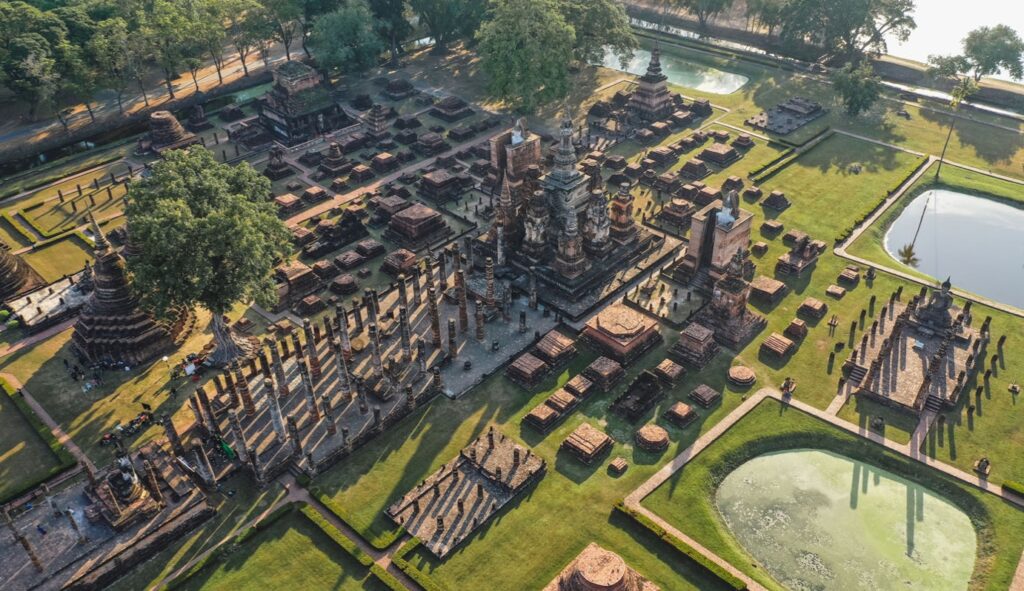
Long before modern Thailand we know, the kingdom of Sukhothai is the exact epitome of magnificence and opulence in ancient times. The kingdom is marked by a range of towering palaces, temples, and monasteries that paint a vivid picture of how Sukhothai once was.
Sukhothai is more than just a tourist destination. It’s also known as the “Cradle of Thailand.” The kingdom is where the Thai language took birth. It’s also where Theravada Buddhism was declared Thailand’s state religion. Those and its prettiest historical ruins make Sukhothai attractive for history buffs and heritage enthusiasts.
In our ultimate guide, you will find all you need to plan your holiday. Our guide includes the best times to visit the area, where to stay, best things to do, and how to get to Sukhothai from Bangkok.
Sukhothai has a tropical monsoon climate. Some months are warm and perfect for strolling around the historical park. Some months, however, bring with it torrential rain, making it harder to explore the sights in Sukhothai Historical Park.
The months of July to October see the most rain. The rainiest month is August, which sees an average of 28 rainy days.
The average high temperature during the rainy season goes between 30° and 33°. The low temperatures go from 23° to 24°.
The months of November to February are known as the peak season. During these months, high temperatures reach 36° and low temperatures go down to 18°.
The months of March to May are the shoulder season. During these months, the heat can become unbearable, with the high temperatures reaching 38°. There are, however, fewer crowds in Sukhothai during these months, which is perfect if you don’t like waiting in line.
During the peak season, hotels in Sukhothai tend to get fully booked. This means you may find it difficult to find an available room if you don’t book months ahead. Additionally, booking your room during the peak season means you’ll likely pay twice or thrice the usual cost.
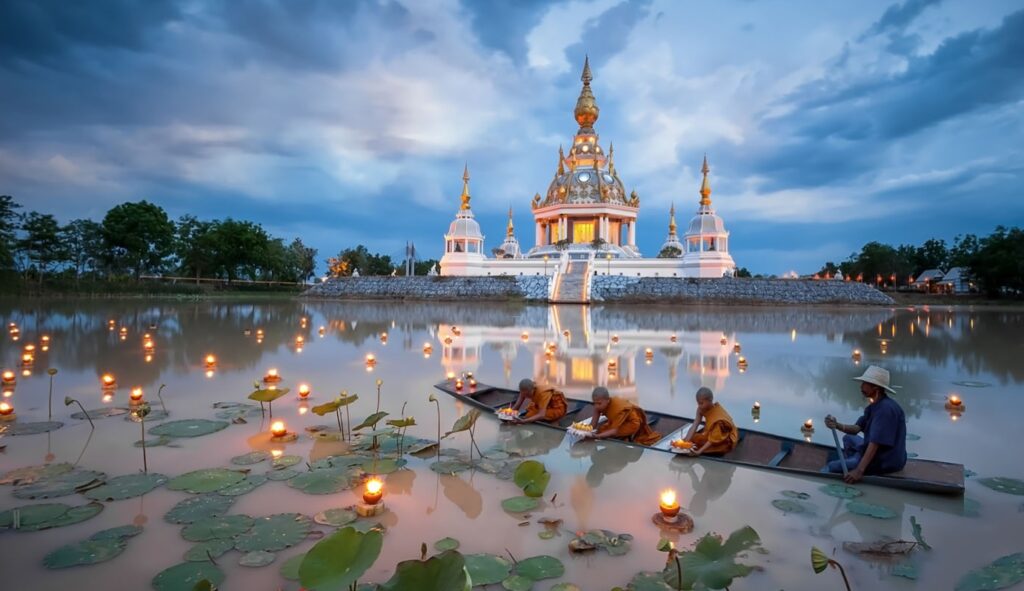
Key events:
During the rainy season, accommodation prices are at their cheapest. Having said that, plenty of hotels and resorts are closed during the low season. You may need to either book months ahead or be willing to walk around town to look for accommodations that remain open even during the rainy season.
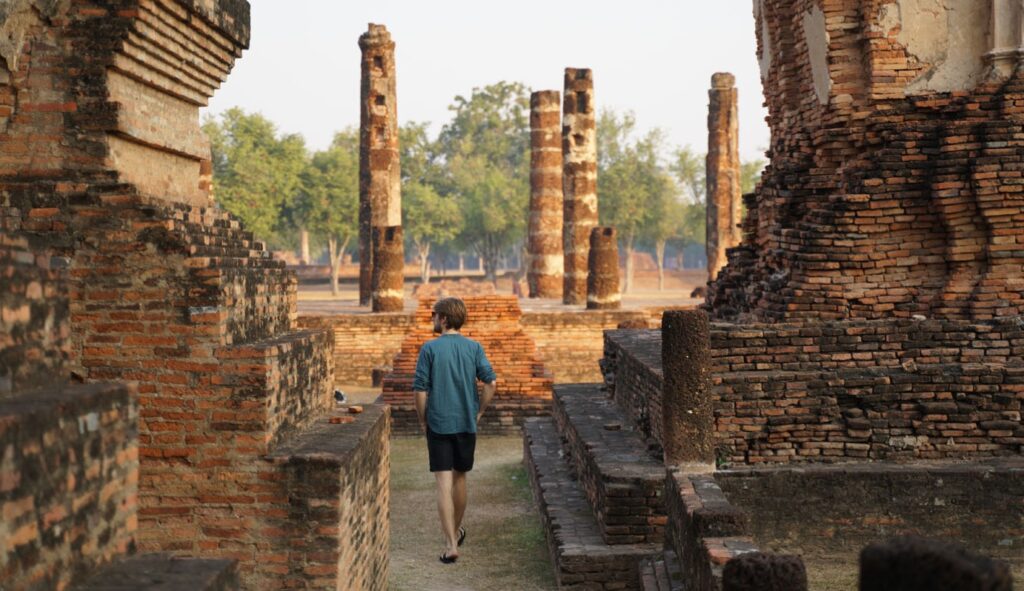
Key events:
No trip to Thailand is complete without taking a trip to Sukhothai—the place where it all began. The area’s trip is literally called the “dawn of happiness” and is one of the most popular tourist sites in Thailand for visitors looking for a real taste of the glories of the ancient kingdom.
Sukhothai sits about 430 kilometers north of Bangkok. The journey to Sukhothai can become confusing. Here’s our run-down of the best ways to get to the ancient city.
Located 30 kilometers north of New Sukhothai is the city’s airport. There are several main carriers traveling to Sukhothai Airport. Bangkok Airways departs from Suvarnabhumi Airport while AirAsia and Nok Air fly in from Bangkok’s Don Muang Airport.
Hopping on a plane to Sukhothai isn’t cheap, but it’s a great option if you’d like to get to the city in two hours.
Plane tickets can range between 2,600 to 5,000 THB.
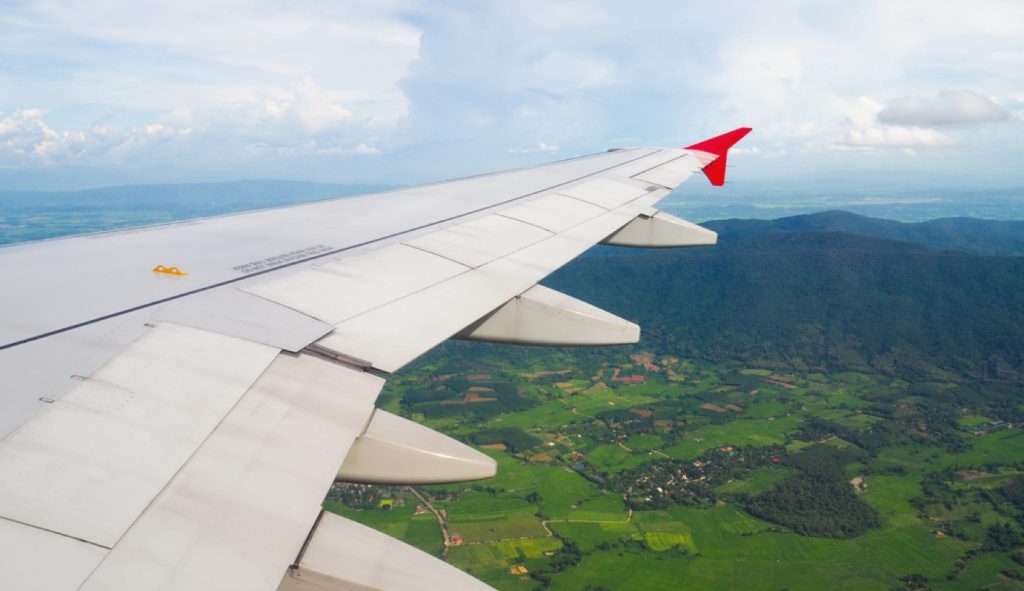
You can easily go around Sukhothai without the need for an extensive transport network. New Sukhothai, in particular, has most of the options immediately available to you, especially if you walk around the streets.
Here are some of the best ways to get around Sukhothai.
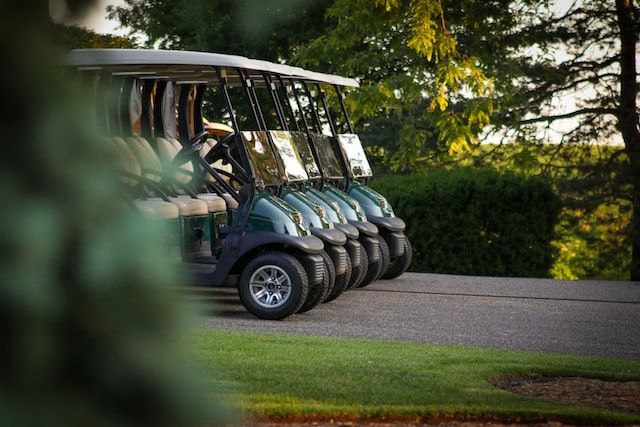
Near the entry gate of the Sukhothai historical park are stalls that offer golf cart rental services. This is a perfect way to travel around the park as the golf cart offers you great protection against the heat of the sun.
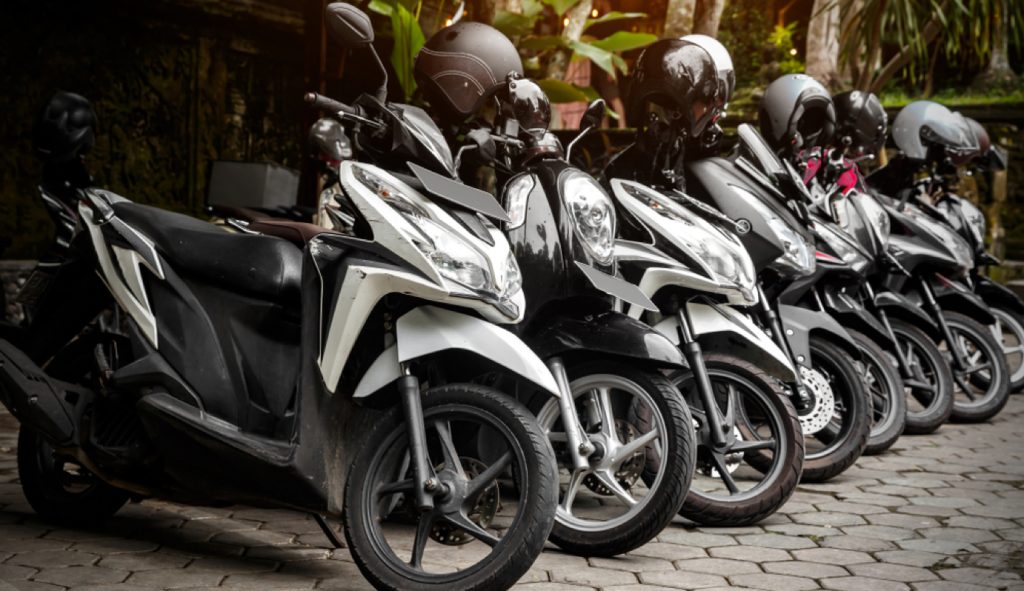
The classic way of getting around the city is by renting a bicycle. There are many bike rental shops strewn across town. Your hotel or guesthouse may even rent you a bike.
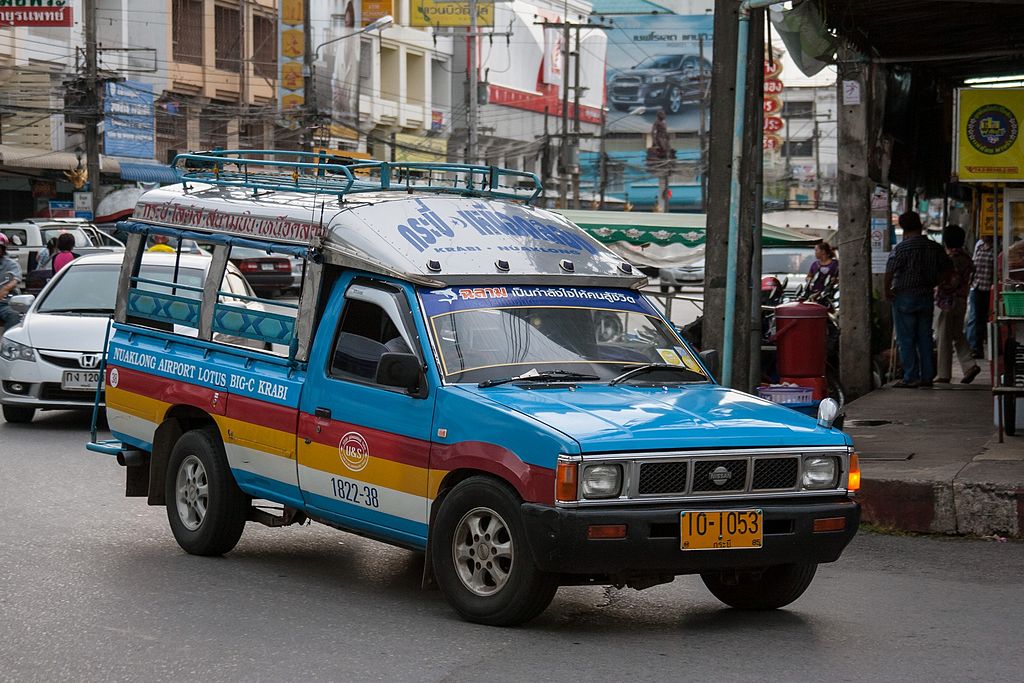
If you’re traveling between New and Old Sukhothai, one of the best options is to jump on a regular blue songthaew. These songthaews run through the city between 6 a.m. to 5:30 p.m., giving you plenty of time to explore the Sukhothai Historical Park.
Songthaew rides from New to Old Sukhothai costs 30 THB and take about half an
Sukhothai is split into two distinct districts: the new and the old area. Each district offer guests a distinct charm and a different range of stays.
Jump to location
Despite its name, New Sukhothai is actually quite an old district, as evidenced by the area’s many wooden houses and temples. It is called “New Sukhothai” because it was founded long after the Sukhothai kingdom collapsed.
New Sukhothai is where thousands of locals go for the best eats and the most vibrant night scene. It’s also where you should stay if you’re looking to book budget accommodations.
New Sukhothai is located 12 kilometers away from the Sukhothai Historical Park. This means you’d have to flag down a songthaew or tuk-tuk to reach the old city walls.
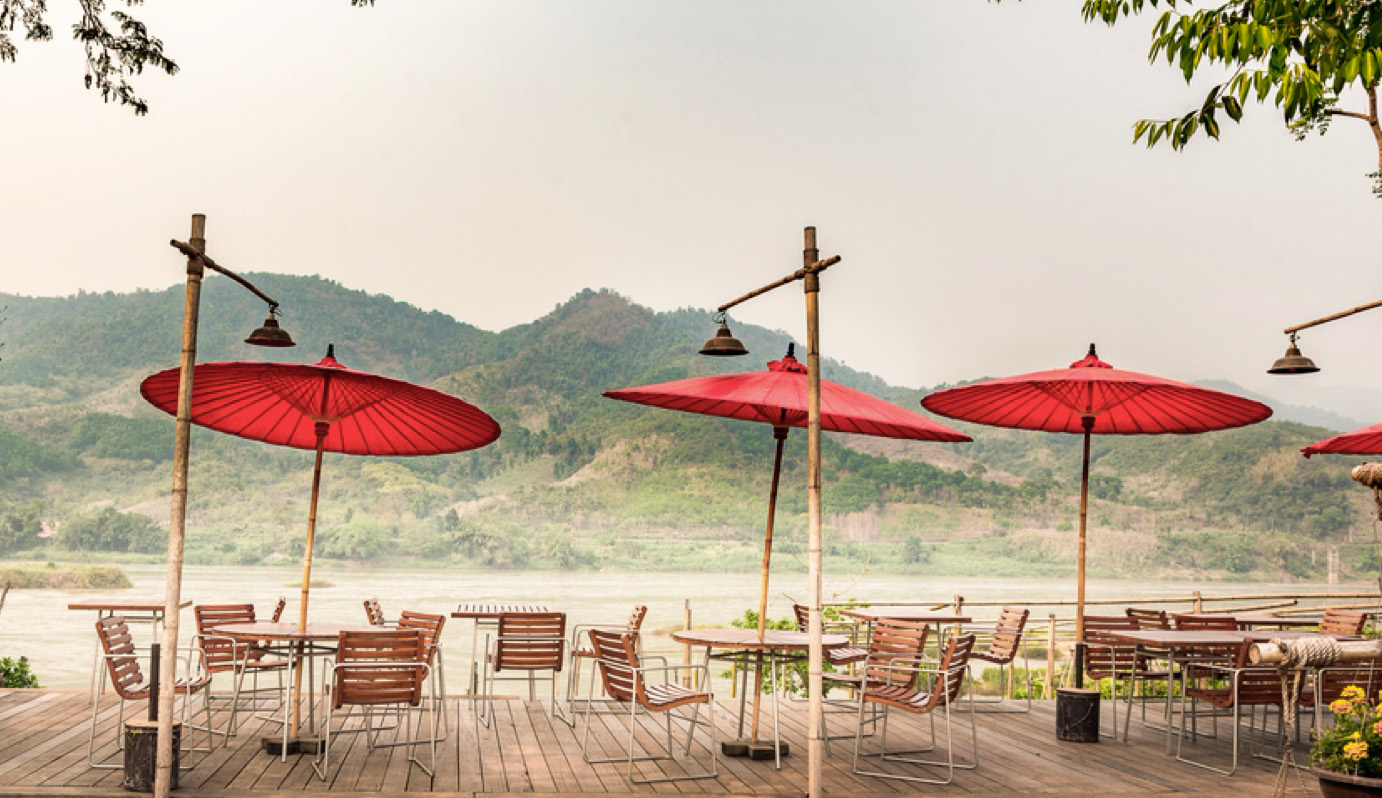
Old Sukhothai (also called Sukhothai Old Town) is actually just a road located near the Sukhothai Historical Park. Having said that, it has a great selection of boutique hotels and more upscale resorts.
The Old Sukhothai district is the perfect choice of place to stay if you want easy access to the historic ruins.
Some travelers will find Old Sukhothai boring as it has a distinct lack of nightlife. Additionally, food choices are also limited to one market and a string of tourist-oriented restaurants.
Sukhothai dates back to the 13th century and once served as the capital of the Siamese Kingdom. Today, visitors who come to explore the city are treated to magnificent ruins and towering temples. Here is our list of top attractions in Sukhothai.
This UNESCO World Heritage Site is a testament to Thailand’s storied past. The park is home to nearly 200 temples, most of which were excavated and partly reconstructed over the years.
During the peak of the Sukhothai period, the central zone housed three earthen walls and two moats. Today, the area is home to 21 wats and four ponds where archeologists have found remnants of artistic and religious works from the past.
Wat Si Chum is an impressive structure featuring a 15-meter-tall silver seated Buddha inside a huge, windowless cuboid temple. Built in the 14th century, Wat Si Chum also has a narrow enclosed staircase on the southern wall that leads to the roof where you will be treated to beautiful views of the park.
Believed to have been built at the end of the 12th century, Wat Phra Phai Luang once served as one of the most important temples in Sukhothai. This wat is less famous than other temples in the old city, which means you’re less likely to see crowds.
We recommend saving Wat Phra Pai Luang for later in the day so you can enjoy the beautiful sunset falling over the ruins.
Wat Saphan Hin is located on a 200-meter-high hill, which means you’ll need to climb to the top. However, the climb is well worth it as you’ll be treated to picturesque views of Sukhothai Historical Park and the other temples surrounding Wat Saphan Hin.
Saphan Hin is considered one of the most magnificent temples in the park’s western zone, primarily due to its impressive 12.5-meter-high Buddha statue standing against a brick wall in the middle. You’ll often see flowers wedged between the statue’s toes as visitors leave it there as a sign of respect.
Located in the park’s central zone, the Wat Chang Lom is a large Buddhist temple known as the “Temple surrounded by Elephants.” The temple earned its name due to its most important structure—a large and well-preserved Singhalese style elephant encircled chedi. The chedi itself stands on a high, two-tiered base and is enclosed by a wall.
Wat Sa Si is one of the most beautiful temples in the park. The Sa Si consists of 10 chedis and is only accessible by crossing a wooden bridge on top of the Traphang-Trakuan lake.
Some of the buildings in Wat Sa Si are still inhabited by monks. Every year, the temple would serve as the central celebration spot for Thailand’s Loy Krathong festival. During this time, the lake becomes a sea of light with thousands of tiny candles floating on the surface.
Sukhothai Historical Park was listed as one of the UNESCO World Heritage Sites in December 1991.
The temples located inside Sukhothai Historical Park were built at different times. However, the park was first opened to the public in the late 1980s.
We recommend spending at least two days fully exploring the Historical Park.
Prepare for heat, sunburn, and dehydration during your trip. It pays well to bring a bottle of water when you visit Sukhothai Historical Park.
Another thing to remember is to be careful not to touch anything in the park. Some temples should not be touched or climbed, while others can be. To save yourself from unnecessary trouble, it’s best not to touch any of the wats in the park.